Cleopatra allegedly died by suicide using a venomous snake in Alexandria on August 12, 30 B.C.E., but some scholars say she may have actually been murdered.
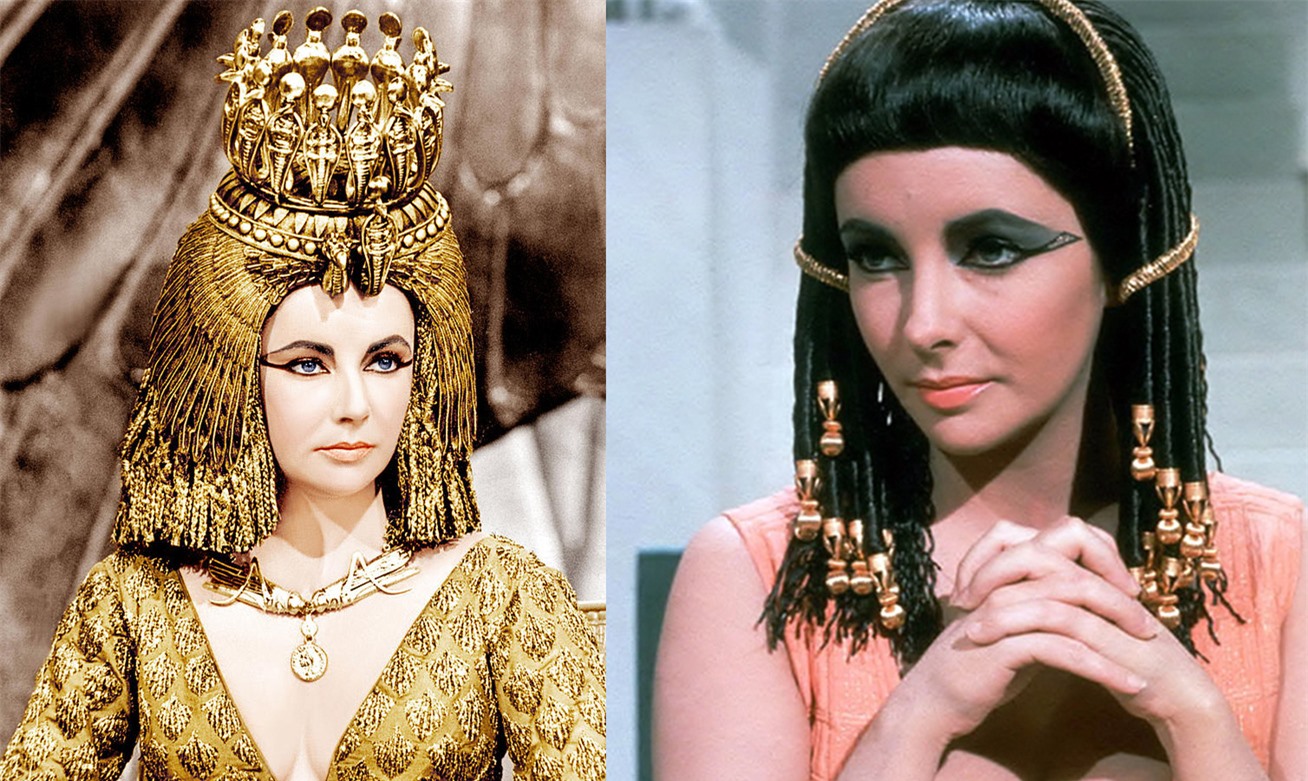
On an August day in 30 B.C., the Egyptian pharaoh Cleopatra VII locked herself in a mausoleum that she’d built on the palace grounds in Alexandria. The Queen of the Nile then sent for a poisonous snake.
An Egyptian cobra — also known as an asp — arrived, smuggled in a fig basket. Cleopatra then held it up to her bare breast until it sunk its teeth into her skin. Almost immediately, Cleopatra died by snakebite — or did she?
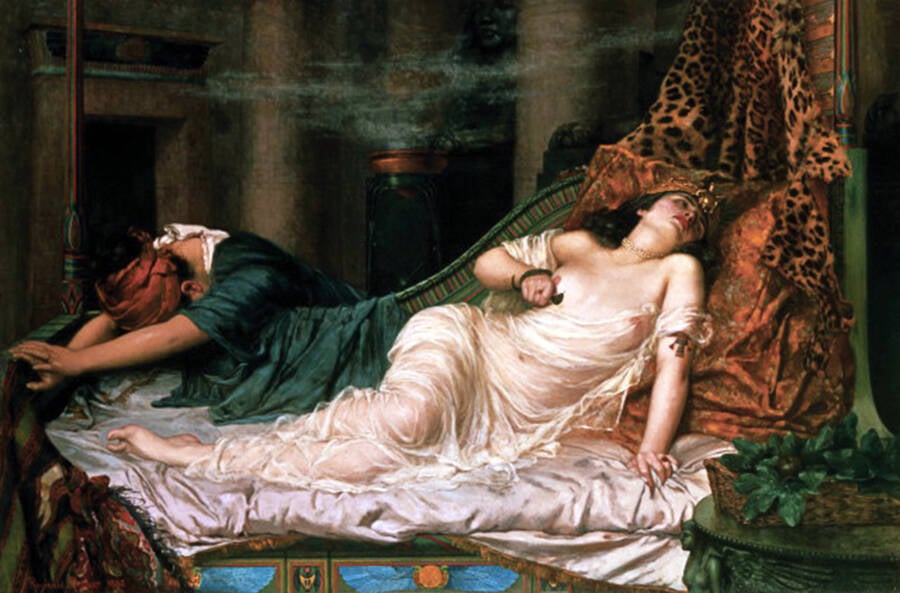
Wikimedia CommonsCleopatra’s death has long fascinated artists and historians.
Born into a dynasty of Macedonian rulers in Egypt, Cleopatra had used her intelligence, ambition, and skills of seduction to rise to power. She spoke multiple languages, raised fearsome armies, and had affairs with two of the Roman Empire’s most powerful men — Julius Caesar and Mark Antony.
But by the time Cleopatra died, her entanglement with the Roman Empire had become a trap that she couldn’t escape. She’d made a powerful enemy in Octavian, Julius Caesar’s adopted son. By that fateful August, Octavian and his army were practically at her doorstep.
With her armies defeated and Antony dead by suicide, Cleopatra had nowhere to turn. She feared that Octavian would capture her and parade her through Rome in a humiliating demonstration of his power.
So, according to legend, Cleopatra decided to die by suicide. But did she really kill herself with a snake? And if not, how did Cleopatra die? Though the asp theory remains the most well-known, many modern historians have different ideas about the true cause of Cleopatra’s death.
The Final Days Of Egypt’s Last Pharaoh
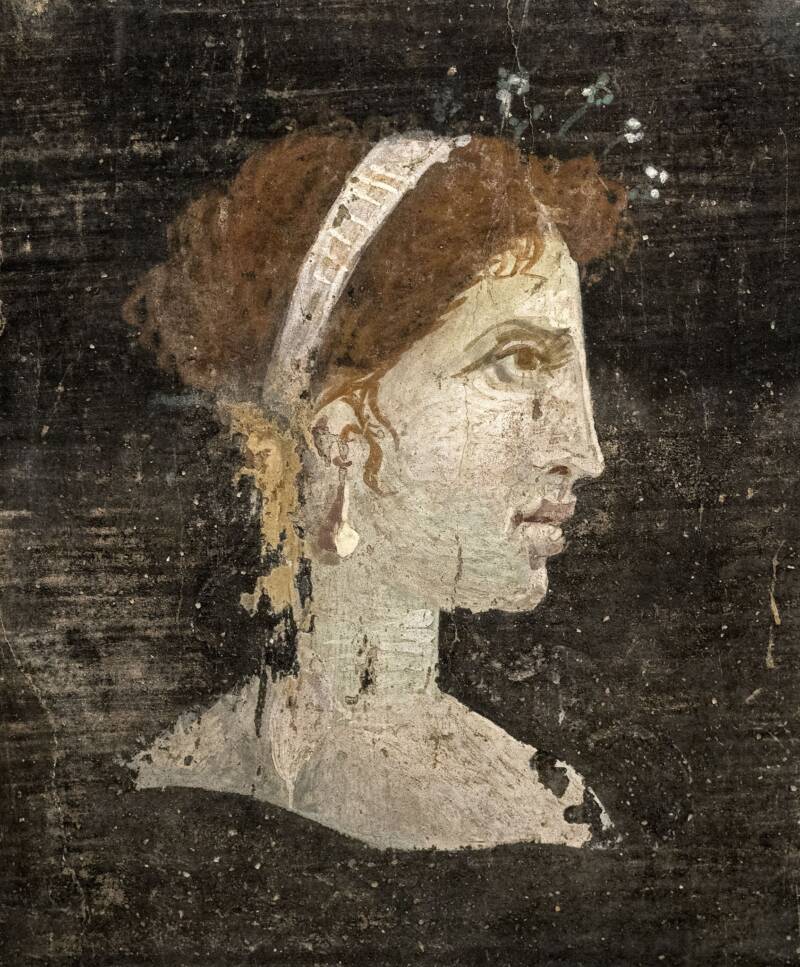
Wikimedia CommonsA possible Roman painting of Cleopatra from the first century A.D.
Although she was born into royalty around 70 B.C., Cleopatra still had to fight her way to power. When her father Ptolemy XII Auletes died, 18-year-old Cleopatra VII shared the throne with her younger brother, Ptolemy XIII.
Their family had reigned in Egypt ever since 305 B.C. During that year, one of Alexander the Great’s generals had taken power in the region and named himself Ptolemy I. Native Egyptians recognized the Ptolemaic dynasty as successors to the earlier pharaohs from centuries past.
But Roman politics continued to cast a heavy shadow on Egypt. As Cleopatra and her brother jostled for dominance, Ptolemy XIII welcomed Julius Caesar to Alexandria. And Cleopatra saw an opportunity to gain the upper hand.
As the legend goes, Cleopatra wrapped herself in a carpet and snuck herself into Caesar’s lodgings. Once she got in, she was able to seduce the Roman leader. And Julius Caesar agreed to help Cleopatra regain her throne.
With Caesar at her side — and, soon, his son Caesarion in her arms — Cleopatra succeeded in snatching power from Ptolemy XIII. Her disgraced younger brother would later drown in the Nile.
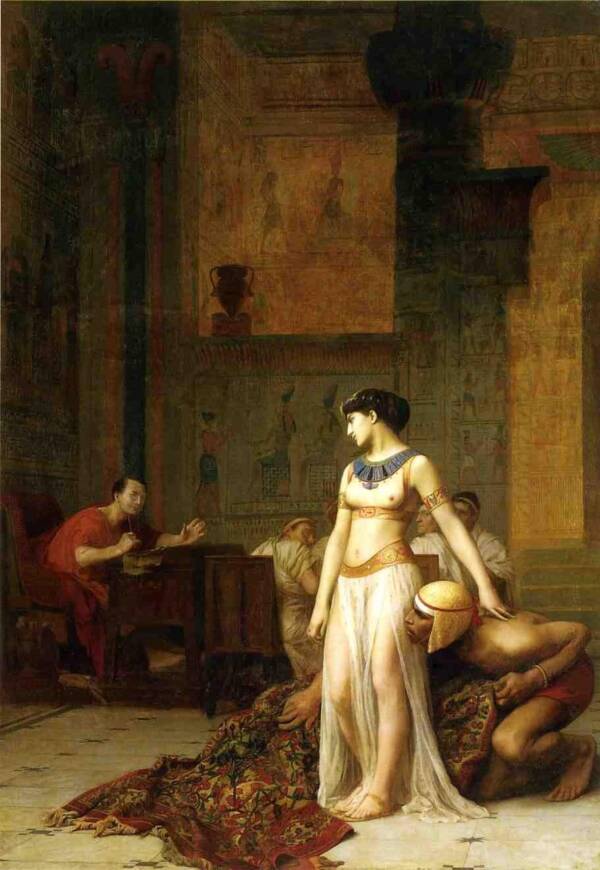
Wikimedia CommonsJulius Caesar and Cleopatra, as depicted in a 19th-century painting.
But Cleopatra’s fate was still linked to Rome’s. Following Caeser’s assassination in 44 B.C., Cleopatra next aligned herself with Mark Antony — who shared power in Rome with Octavian, Caesar’s adopted son and presumed heir, and Lepidus, a Roman general.
Like Caesar, Antony fell in love with Cleopatra. Although Antony later entered a diplomatic marriage with Octavian’s sister, he clearly preferred the company of the Queen of the Nile.
But the Romans distrusted Cleopatra — as a foreigner and a powerful woman. In the first century B.C., the poet Horace described her as “a crazy queen… plotting… to demolish the Capitol and topple the [Roman] Empire.”
And so when Cleopatra and Antony named Caesarion as Caesar’s true heir, Octavian decided to act. He claimed that Antony was under Cleopatra’s power — and declared war on the Egyptian queen.
Octavian then fought Antony and Cleopatra at the Battle of Actium in 31 B.C., showing his enemies no mercy. After Octavian’s victory, Antony and Cleopatra retreated to the city of Alexandria — where both would soon perish.
How Did Cleopatra Die?
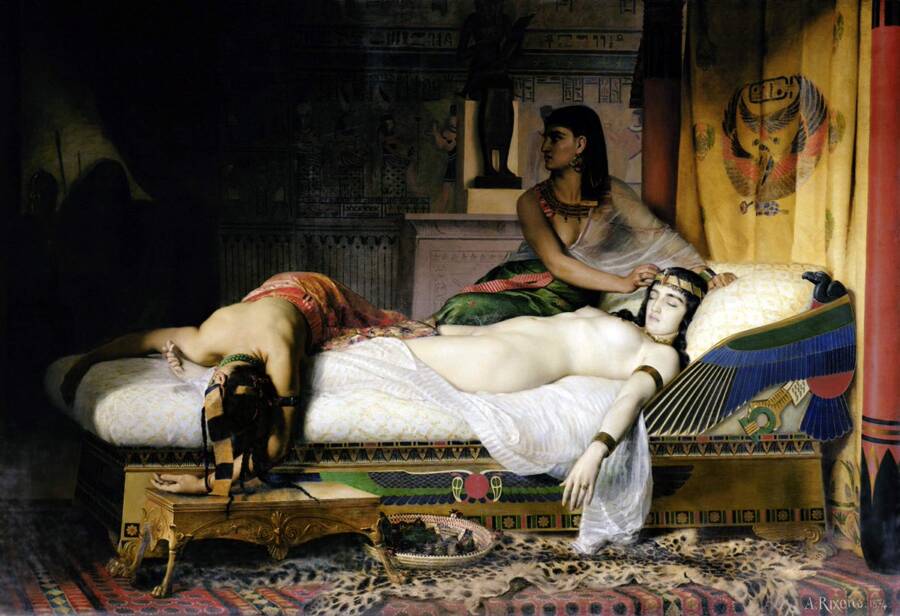
Wikimedia CommonsA 19th-century painting of the death of Cleopatra.
By August 30 B.C., Cleopatra’s world had completely crumbled around her. Meanwhile, Antony’s troops had humiliated him by surrendering to Octavian. Before long, Caesar’s heir would take Alexandria.
Cleopatra fled to a mausoleum that she’d built on the palace grounds and soon spread a rumor that she had killed herself. Horrified, Antony immediately tried to follow suit. Although he stabbed himself with his own sword, he survived long enough to hear that Cleopatra was still alive.
“So he, learning that she survived, stood up, as if he had still the power to live,” said the Roman historian Cassius Dio. “But, as had lost much blood, he despaired of his life and besought the bystanders to carry him to the monument.”
There, Antony died in Cleopatra’s arms.
But how did Cleopatra view Antony’s death? Some Roman historians, who certainly have a bias, suggested that Cleopatra had actually planned Antony’s death all along. They imply that she intended to seduce Octavian — just as she had seduced Caesar and Antony in the past — to stay in power.

Wikimedia CommonsCleopatra allegedly killed herself with an Egyptian cobra — also known as an asp.
As Dio wrote, “[Cleopatra] believed that she was really beloved, in the first place, because she wished to be, and, in the second place, because she had in the same manner enslaved [Julius Caesar] and Antony.”
Shortly before Cleopatra’s death, she had actually met with Octavian. According to Cleopatra: A Life by Stacy Schiff, the Queen of the Nile declared herself a friend and ally of Rome, hoping that would help her situation.
But the meeting ultimately went nowhere. Octavian was neither swayed nor seduced. Terrified that Octavian would cart her back to Rome and parade her as his prisoner, Cleopatra decided to kill herself on August 12th.
As the legend goes, Cleopatra shut herself in her mausoleum with two handmaidens, Iras and Charmion. Dressed in her formal robes and jewels, the queen grabbed a writhing asp that had been smuggled to her. After she sent a note to Octavian about her burial requests, she brought the snake to her bare breast — and killed herself. She was 39 years old.
At some point, Cleopatra had also allowed the snake to bite her two handmaidens, as they too were dead at the scene.
The Aftermath Of Cleopatra’s Death
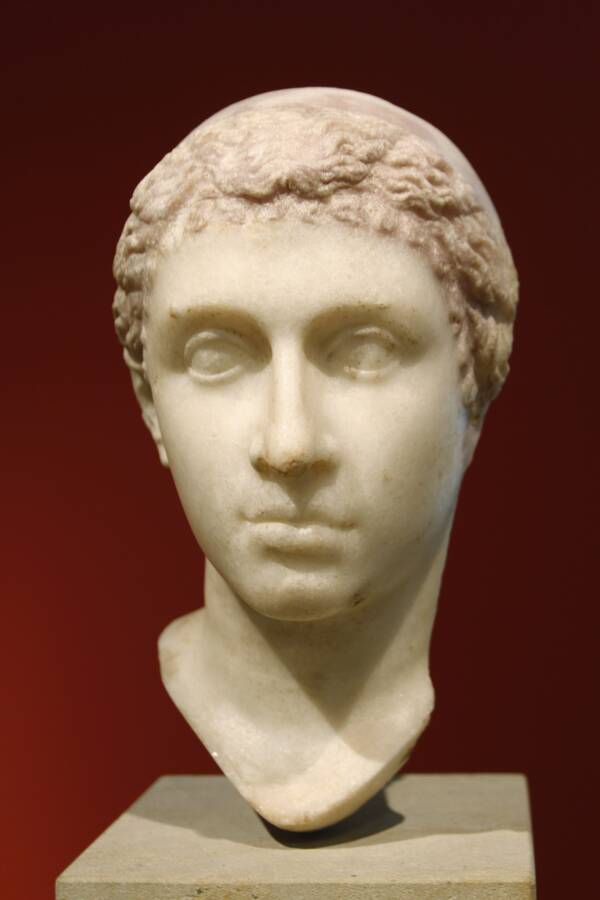
Wikimedia CommonsA Roman bust of Cleopatra.
In the aftermath of Cleopatra’s death, Octavian wavered between awe and anger. Plutarch describes him as “vexed at the death of the woman” and appreciative of “her lofty spirit.” Dio also describes Octavian as admiring, although “excessively grieved” upon hearing the news.
The queen had died in an honorable way — at least by Roman standards. “Cleopatra’s final act was arguably her finest one,” noted Schiff. “That was a price Octavian was perfectly happy to pay. Her glory was his glory. The exalted opponent was the worthy opponent.”
Flush with victory, Octavian annexed Egypt into Rome on August 31st, ending centuries of Ptolemaic rule. His men found and killed Caesarion soon afterward. Meanwhile, Roman historians wasted no time framing Cleopatra as one of history’s most evil women.
The Roman poet Propertius called her “the whore queen.” Dio referred to her as “a woman of insatiable sexuality and insatiable avarice.” And about a century later, the Roman poet Lucan called Cleopatra “the shame of Egypt, the lascivious fury who was to become the bane of Rome.”
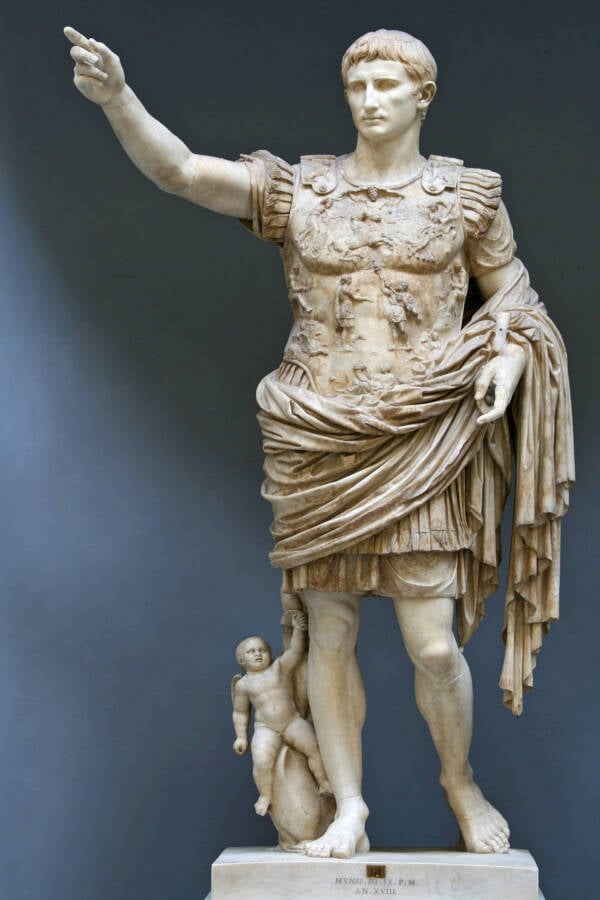
Wikimedia CommonsA statue of Octavian, better known today as Augustus.
Cleopatra’s accomplishments dimmed in comparison to her newfound notoriety. Her ability to speak multiple languages — including Egyptian, something her forefathers had never bothered to learn — and her political acumen became secondary to her reputation as a “whore.”
Moreover, as Schiff notes, Octavian painted his defeat of Cleopatra as the herald of a new, golden age. “Validity was restored to the laws, authority to the courts, and dignity to the senate,” crowed the historian Velleius.
As time marched on, Octavian, who is better known today as “Augustus,” became the hero. And of course, Cleopatra became the villain.
“By love she gained the title of Queen of the Egyptians, and when she hoped by the same means to win also that of Queen of the Romans, she failed of this and lost the other besides,” wrote Dio. “She captivated the two greatest Romans of her day, and because of the third she destroyed herself.”
But Cleopatra’s life — and her mysterious death — continues to fascinate countless people to this day. And many modern historians have voiced their suspicions about the snake story.
Lingering Mysteries About Cleopatra’s Suicide
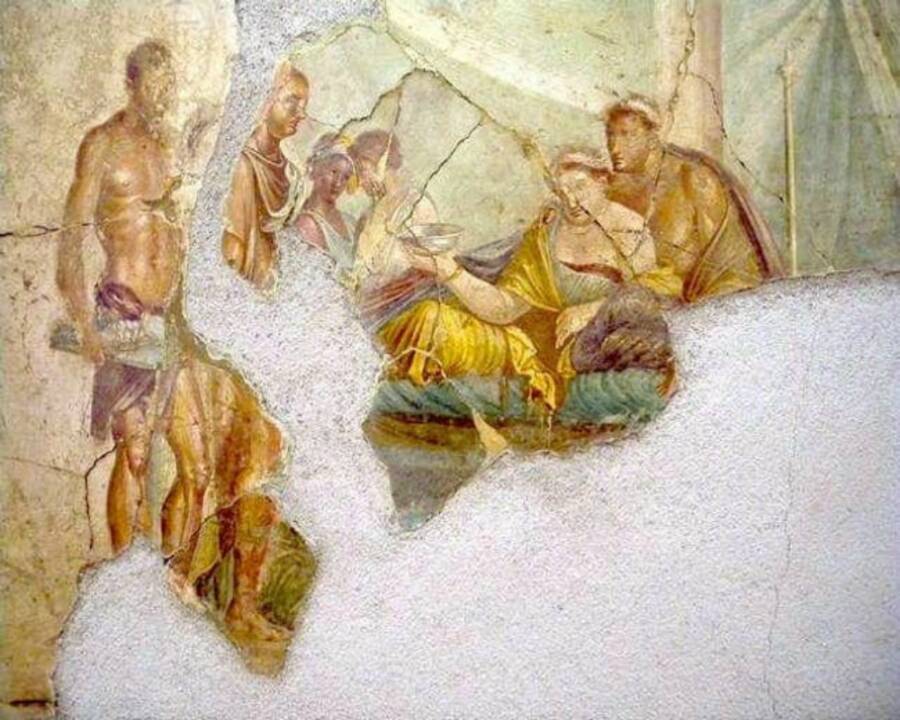
Wikimedia CommonsA Roman wall painting from the first century A.D., thought to depict Cleopatra’s death.
Thousands of years later, it’s still not clear exactly how Cleopatra died. And even early on, no one seemed to know what had caused her demise.
Dio wrote, “No one knows clearly in what way she perished, for the only marks on her body were slight pricks on the arm. Some say she applied to herself an asp which had been brought in to her in a water-jar, or perhaps hidden in some flowers.”
Plutarch, who also pondered the asp theory, agreed that no one could be certain how Cleopatra died. “The truth of the matter no one knows,” he wrote. “Neither spot nor other sign of poison broke out upon her body. Moreover, not even was the reptile seen within the chamber, though people said they saw some traces of it near the sea.”
It’s worth noting that both Plutarch and Dio were born after Cleopatra’s death — meaning that there was plenty of time for untrue rumors to spread.
So where did the story of the asp come from? According to Cleopatra: A Biography by Duane Roller, the author notes the prevalence of snakes in Egyptian mythology. As it turns out, the asp was once seen as a symbol of royalty. Thus, it would’ve been a fitting way for a queen to die.
Go ad-free and become a member today
“It made poetic sense and good art,” wrote Schiff, adding, “So did the naked breast, also not part of the original tale.”
But many historians today do not believe the asp theory. For one thing, asps often measure between five and eight feet long. It would have been difficult to hide such a large snake in a small basket of figs.
Plus, there was also the matter of efficacy. A snakebite from an asp might kill you — or it might not. And either way, it could be extremely painful. “A woman known for her crisp decisions and meticulous planning would surely have hesitated to entrust her fate to a wild animal,” Schiff noted.
Assuming that Cleopatra died by suicide, some contemporary historians suggest that she drank poison to kill herself instead.
“It is certain that there was no cobra,” claimed Christoph Schaefer, a professor of ancient history at Trier University. He firmly believes that she took a mixture of hemlock, wolfsbane, and opium to end her life.
Schiff agrees — if Cleopatra died by suicide, that is.
While some experts maintain that she killed herself, others question whether Octavian played a role in Cleopatra’s death. After all, she could have still caused problems for him while she was alive. And of course, many Romans would certainly be happy to see her dead. Though Octavian was apparently surprised to hear that she had died, Schiff theorizes that his performance could have potentially been “a farce.”
In the end, we may never know for sure how Cleopatra died. Much of the story remains a mystery. Although she and Antony were buried together — per her final wishes — their bodies have never been found.
Thus, the sands of Egypt obscure the facts of Cleopatra’s death — just as historians obscured the facts of her life.